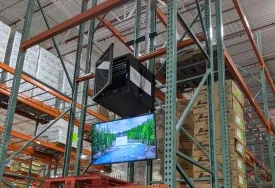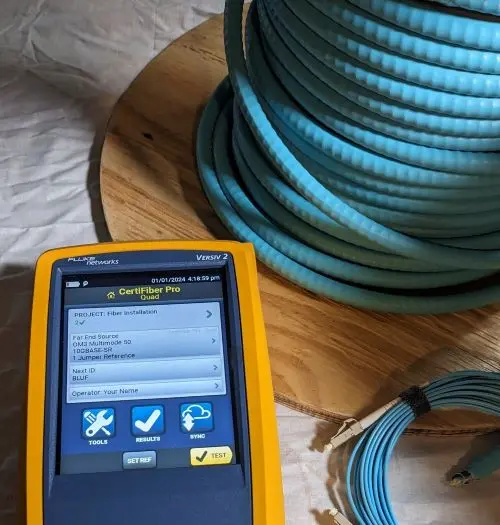Detroit, MI
Low voltage network monitoring

Low voltage network monitoring is an essential aspect of modern electrical infrastructure management, playing a crucial role in ensuring the safety, efficiency, and reliability of electrical systems. As urban areas continue to expand and the demand for energy increases, the need for effective monitoring solutions becomes more pronounced. Low voltage networks are primarily responsible for distributing electricity from substations to residential, commercial, and industrial consumers. Monitoring these networks involves tracking various parameters such as voltage, current, power factor, and temperature to detect anomalies and prevent potential failures. With the integration of smart technologies and the Internet of Things (IoT), low voltage network monitoring has become more advanced, allowing for real-time data collection and analysis which helps in proactive maintenance and fault prevention.
The benefits of implementing low voltage network monitoring systems are extensive, particularly in enhancing operational efficiency and reducing downtime. By continuously monitoring the network, utility companies can quickly identify issues such as overloads, short circuits, and equipment malfunctions. This proactive approach not only improves service reliability but also extends the lifespan of electrical components by preventing excessive wear and tear. Moreover, low voltage network monitoring contributes to energy conservation efforts by identifying inefficiencies and enabling more informed decision-making regarding energy distribution. As a result, businesses and residential users can enjoy more stable power supply, ultimately leading to reduced operational costs and improved customer satisfaction.
In addition to operational benefits, low voltage network monitoring also plays a significant role in regulatory compliance and environmental sustainability. Many regions have stringent regulations concerning the reliability and performance of electrical networks. By leveraging advanced monitoring solutions, utility providers can ensure compliance with these regulations, avoiding costly penalties and enhancing their reputation in the market. Furthermore, the data gathered from monitoring systems can be used to support environmental initiatives by optimizing energy use and reducing carbon footprints. As the world moves towards more sustainable energy solutions, the importance of efficient low voltage network monitoring systems will continue to grow, positioning it as a vital component in the future of smart cities and green energy initiatives.
We bring a high level of expertise to every project, backed by years of industry experience. Please visit our work to see detailed examples of our completed projects and the high-quality standards we uphold.

Our team stays up-to-date with the latest network standards and installation practices, ensuring that your systems are cutting-edge and compliant. This means we use the most current technologies and methods to deliver reliable, efficient, and future-proof networking solutions.

We use only the highest quality copper, fiber, and AV products, ensuring superior performance and durability in all our installations. Each product is certified to meet or exceed manufacturers' specifications, guaranteeing optimal reliability and efficiency for your network.

Our data cabling projects are performed professionally, reliably, and with full accountability, giving you peace of mind and confidence in our services.
Upgraded a global financial services company’s WAN to an AT&T rate adjustable 100Mbps interstate-rated switched Ethernet circuit. Install flexible conduit from the parking garage telco room to the building interior. Pull 300’ CAT 5E CMP cable from AT&T demarc using the building’s existing conduit over the lobby and up to the tenant’s 3rd floor MDF...
Complete build-out of the cable plant for a national fine dining restaurant. Install flame-retardant telecom backboards in the electrical room. Install an 11U wall-mount open swing rack on the backboard. Ground rack to building UFER with #6 AWG. Core drill into the masonry block wall and install 1-¼ EMT sleeves. Build overhead cable support system in kitchen and dining...
Achieve higher bandwidth and faster data transfer rates for an investment bank branch’s Main Distribution Frame (MDF) to Immediate Distribution Frame (IDF) backbone. Pull (1) 6-strand armored fiber, 50 MIC MM OM4 cable and (4) CAT 6 CMP cables from 1st floor MDF to 1st floor IDF using existing cable pathways. Ground armored fiber to building UFER. Terminate, certify, and label all...
Complete network build-out of the appliances & kitchen cabinets department for a national home improvement retailer. Label existing data and voice cabling that connects to existing store terminals, printers, and phones. Reroute existing cabling to a temporary location. Move store terminals, printers, and phones to...

Detroit, Michigan, known as the "Motor City," is a vibrant metropolis with a rich tapestry of history, culture, and innovation. With a population of approximately 670,000, Detroit stands as the largest city in Michigan and a pivotal hub in the Midwest. Its historical significance is deeply rooted in its role as the heart of the American automotive industry, home to the iconic Big Three—General Motors, Ford, and Stellantis (formerly Chrysler). This industrial backbone continues to drive the city's economy, complemented by burgeoning sectors such as technology, healthcare, and finance.
Detroit's cultural landscape is as compelling as its industrial prowess. The city is renowned for its contributions to music, being the birthplace of the Motown sound, which revolutionized the music industry in the 1960s. Visitors can explore this musical heritage at the Motown Museum, a must-see landmark that offers a glimpse into the studio where legends like Marvin Gaye and Stevie Wonder recorded their hits.
The city's architectural diversity is on full display with landmarks such as the Detroit Institute of Arts, housing a world-class collection of over 65,000 artworks, and the Guardian Building, a striking example of Art Deco design. Detroit's Riverwalk, consistently rated among the best in the country, offers breathtaking views of the Detroit River and serves as a communal space for events and recreational activities.
Detroit's economic landscape is experiencing a renaissance, attracting entrepreneurs and startups, particularly in the tech industry. The city's revitalized downtown area is a testament to this growth, with new businesses, restaurants, and entertainment venues invigorating the urban core. This resurgence is supported by a strong sense of community and local pride, fostering a dynamic environment that is both welcoming and forward-looking.
Historically, Detroit played a pivotal role in the Underground Railroad and the Civil Rights Movement, with sites like the Charles H. Wright Museum of African American History preserving this legacy. The city's diverse neighborhoods, each with its own unique character, reflect a rich mosaic of cultures contributing to Detroit's vibrant community dynamics.
Geographically, Detroit's position as a border city with Windsor, Canada, accentuates its importance as a trade and logistics hub, further bolstered by its extensive network of highways and railways. The Detroit Metropolitan Wayne County Airport is one of the busiest in the nation, facilitating both domestic and international travel.
For residents, businesses, and tourists alike, Detroit offers a compelling blend of historical intrigue, economic opportunity, and cultural richness. Whether you're drawn by its storied past, its promising future, or its welcoming community spirit, Detroit